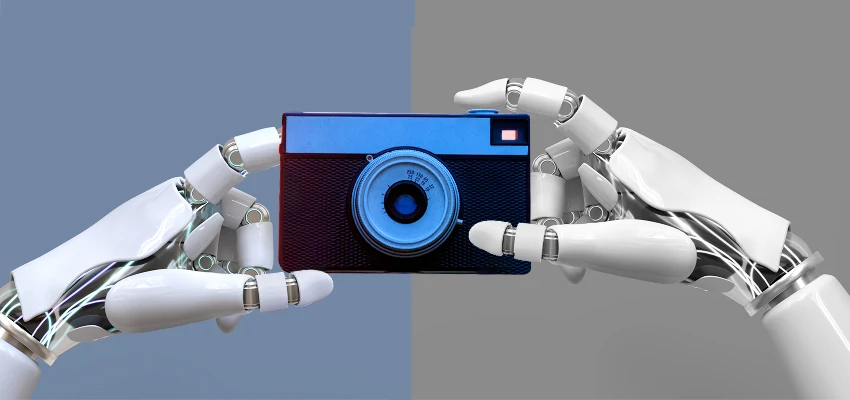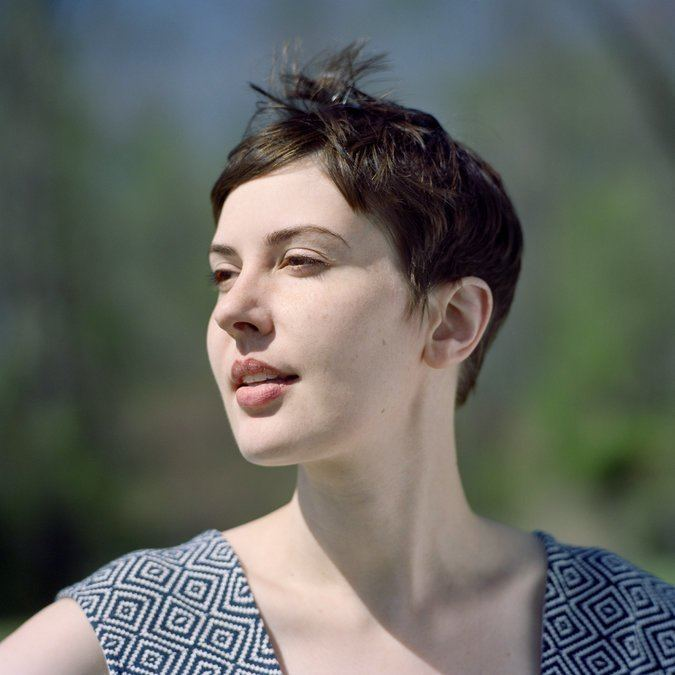AI in photojournalism is transforming the way we capture, preserve, and interpret visual stories in an age where technology often blurs the line between reality and fabrication. As established by Kira Pollack, a prominent figure in the field, the advancements in photojournalism technology can either undermine the authenticity of images or empower photojournalists to safeguard their archives. This duality highlights the impact of AI photography in ensuring that the crucial narratives captured by photographers are not lost amidst the noise of synthetic imagery. With the power of artificial intelligence, we can envision innovative solutions for photo archives preservation that not only protect the integrity of these images but also enhance visual storytelling through AI. By leveraging AI tools responsibly, the future of journalism could see a harmonious blend of human creativity and technological advancement that preserves the truth while pushing the boundaries of visual communication.
The interplay of artificial intelligence and visual journalism represents a delicate balance between innovation and preservation. By harnessing cutting-edge photojournalism technology, professionals in the industry, like Kira Pollack, are exploring the potential of AI to revolutionize the preservation of photo archives. This exploration brings to light the significance of maintaining integrity in photo collections while enhancing the landscape of visual storytelling through AI-driven insights. As the lines between genuine and generated images become increasingly blurred, the role of AI in crafting compelling narratives and protecting the legacy of photojournalism becomes more critical. Ultimately, the conversation is about redefining how we engage with and understand the visual documentation of our world.
The Intersection of AI and Photojournalism
AI is revolutionizing many aspects of our lives, and photojournalism is no exception. Artists and photojournalists like Kira Pollack are not merely enmeshed in a battle against technology but are also discovering how to incorporate AI innovations into their practices. The duality of AI as both a potential threat and a tool for preservation is an ongoing conversation. Instead of perceiving AI as solely a rival that could diminish the authenticity of visual storytelling, Pollack suggests that these technologies might be harnessed to catalog and protect invaluable photo archives. This initiative acknowledges the importance of contextualizing images, particularly as the role of photojournalists is evolving in a digital-first world.
Through advanced AI algorithms, we stand on the cusp of a new era driven by immense data processing capabilities. This technology can assist photojournalists by providing insights into intrinsic elements of images, ensuring that decades’ worth of crucial visuals do not vanish into obscurity. By understanding the emotional resonance of specific photographs, AI can help highlight the stories behind these images, fostering a greater appreciation for the work of photojournalists while simultaneously serving as a safeguard against information dilution. As the field grapples with the need for authenticity amidst potential misinformation, embracing AI innovations could serve as a pivotal step in reaffirming public trust in photojournalism.
Preserving Photo Archives with AI Technology
Preservation of photo archives is one of the most pressing issues facing photojournalism today. Kira Pollack’s work aims to redefine how we perceive photo archives—not as dusty boxes filled with neglected images but as dynamic repositories of our shared visual history. With advancements in AI technology, there is now a pathway to effectively organize, categorize, and contextualize these vital resources. By employing machine learning algorithms, archives can be efficiently indexed, making it easier for researchers, historians, or the general public to access extensive collections that tell the story of critical historical events.
In the digital age, where photojournalism encounters myriad threats from misrepresentation to unauthorized use, the preservation of archives becomes paramount. The integration of AI in preserving and protecting these records not only helps capture their essence but also strengthens the legacy of photojournalists. Utilizing AI tools facilitates the creation of more immersive archival experiences, where metadata and contextual narratives come together, breathing new life into historical photographs. Pollack’s efforts emphasize the need for an ethical approach to ensure images are safeguarded while maximizing their discoverability and engagement.
Kira Pollack’s Vision: The Future of Visual Storytelling
Kira Pollack’s vision for the future of visual storytelling reflects the potential synergy between AI and photojournalism. Recognized as a transformative figure in the media landscape, Pollack is utilizing her fellowship to explore the implications of AI technologies on the narrative aspect of photography. Her focus is not just on surviving in the age of AI but thriving by blending innovation with the core values of journalism—truthfulness, creativity, and engagement. By recognizing that AI can highlight the intricate relationships between visuals and narratives, Pollack’s approach paves the way for a new era, where technological advancements enhance storytelling rather than replace it.
As she engages with experts from various disciplines, Pollack aims to cultivate a nuanced understanding of how photography and AI can coexist.| Through her research, she envisions solutions that foster collaboration between technologists and photojournalists, ensuring that the essence of humanity captured through photographs remains intact and visible. The integration of AI in visual storytelling not only broadens the potential realms for creative expression but also emphasizes collective memory, reinforcing the pivotal role photojournalists play in documenting the human experience.
Navigating the Challenges of AI in Photography
The advancement of AI technology brings with it significant challenges for the field of photography. The capability to generate photorealistic images without traditional methods of capture raises vital questions about trust and authenticity in photojournalism. Pollack’s insights highlight the inherent tensions between exploiting AI for creative purposes and the ethical implications that arise when it comes to copyright and ownership. As AI tools evolve, concerns about unauthorized usage of a photographer’s work become increasingly pronounced, making it essential for professionals to actively engage in discussions about the future of their craft.
With the rapid dissemination of AI-generated content in digital spaces, photojournalism faces the task of reclaiming its narrative authenticity. Pollack underscores the need for photojournalists to remain proactive, adapting to technological changes while questioning how to leverage AI responsibly. By distinguishing between the generative capacity of AI and its potential for enhancing archival work, the field can navigate this complex landscape with a focus on preserving integrity. Cultivating a dialogue among stakeholders from various backgrounds will be essential in establishing best practices that honor the principles of photography while embracing the benefits of emerging technology.
The Role of Ethical Considerations in AI Photography
As AI technologies become increasingly integrated into photojournalism, ethical considerations must come to the forefront. Kira Pollack emphasizes that the objective should not just be to utilize AI for its efficiency but to ensure that it aligns with the values of journalism and photography. The lines must be drawn clearly when it comes to authorship, the provenance of images, and the ethical implications of using AI-generated content. Engaging in conversations surrounding these topics can empower photojournalists to safeguard their work against exploitation and misrepresentation.
The responsibility lies in the hands of those working in the industry to redefine ethical standards in the era of AI. Pollack advocates for developing frameworks to protect image rights and promote responsible usage of AI-generated content. This includes actively voicing concerns about unauthorized exploitation, educating colleagues about their rights, and encouraging more extensive dialogue around the implications of AI in visual storytelling. By anchoring ethical considerations in AI innovation, the photojournalism community can navigate the future with integrity, ensuring that the core values of truth and authenticity are preserved.
Enhancing Visual Storytelling Through AI Cataloging
AI holds promise not only as a tool for preservation but also as a means to enrich visual storytelling. By employing sophisticated algorithms, photojournalists can enhance the accessibility of their content, generating deeper insights into their work. Kira Pollack’s research focuses on how AI can effectively analyze images, providing contextual data that extends beyond mere visual representation. Through high-level cataloging, the intricate layers of stories captured in photographs can surface, allowing audiences to engage more thoughtfully with visual narratives.
The ability of AI to decipher emotional cues, composition, and symbolism from images grants photojournalists an invaluable resource for curating impactful storytelling. This newfound capability amplifies the viewers’ understanding, creating an immersive experience that connects people to the raw emotions and urgent issues depicted in photojournalism. Pollack’s efforts to harness AI technology represent a shift toward exploring dynamic storytelling methods, which honor the agency of photojournalists while maximizing the impact of their work on wider audiences.
The Future of Copyright in an AI-Driven Era
With the emergence of AI-generated images, copyright laws are faced with unprecedented challenges. Kira Pollack’s engagement in this arena sheds light on the complexities of ownership and authorship in the context of AI utilization in photography. As images are created autonomously by machines, the traditional notions of who can claim ownership over these creations require reevaluation. Pollack’s discussions emphasize the urgency to develop comprehensive frameworks that address these evolving dynamics, ensuring the rights of professional photographers are preserved.
Moreover, as historical archives become integrated into AI-driven databases, the implications for copyright pose risks if not appropriately managed. This raises crucial questions regarding ethical practices in how AI models are trained and how content is used. Pollack advocates for strong advocacy among photojournalists to safeguard their legacies and address potential misappropriations. Taking proactive steps toward updating copyright frameworks and engaging with policymakers will be essential to protect their rights and navigate this evolving landscape.
Building Trust in AI-Powered Visual Journalism
Trust is a cornerstone of journalism, and as the field grapples with the implications of AI, restoring public confidence in visual storytelling becomes paramount. Kira Pollack’s research underscores the importance of transparency in utilizing AI technologies that enhance, rather than undermine, the credibility of photography. By informing audiences about the measures taken to ensure integrity in the presentation of visual media, photojournalism can demonstrate its commitment to upholding truth in an AI-driven landscape.
To foster trust, it is also crucial to educate both journalists and audiences on the complexities of AI technologies. Pollack champions open conversations about how AI is used in the collection and analysis of images, positioning it as a tool that supports the craft rather than a replacement for genuine artistry. Creating a culture of transparency fosters public engagement, ensuring that audiences grasp not only the stories behind the images but also the ethical principles guiding their creation. In this environment, trust can flourish, reinforcing the essential role of photojournalists as custodians of visual truth.
Transcending Technological Barriers in Photography
With large-scale technological advancement comes the necessity to transcend inherent barriers that may threaten the artistry of photography. Pollack emphasizes that photography, at its core, embodies a human touch that technology can only aim to enhance rather than replicate. Her reflections on AI’s role in photojournalism advocate for a balanced approach—one that embraces technological innovations while ensuring that the essence of the story is preserved. This approach enables photographers to utilize AI as a supportive tool that broadens creative possibilities without losing the critical human element inherent in visual storytelling.
Photojournalism, therefore, requires not only technical adaptation but a philosophical shift in how these technologies are perceived. Pollack envisions a future where photographers harness AI’s analytical strengths while maintaining their individual styles, fostering a symbiotic relationship that drives photography forward. By taking proactive steps to educate and engage the community, photojournalists can reconstruct the narrative around technology as an ally in their quest to depict the world—allowing them to translate their perspectives into compelling visual stories that resonate deeply with audiences.
Frequently Asked Questions
What is the impact of AI on photojournalism technology?
AI is transforming photojournalism technology by providing tools that enhance image analysis and cataloging, thus preserving visual stories. However, it also raises concerns over copyright issues and the authenticity of images, making it crucial for photojournalists to adapt while leveraging AI’s benefits.
How is Kira Pollack using AI in photo archives preservation?
Kira Pollack is leveraging AI to protect and organize extensive archives of photojournalism, focusing on maintaining the integrity and context of images while ensuring they are accessible. Her work emphasizes using AI to enhance the discoverability of vital visual stories without compromising authorship rights.
What role does AI photography impact have on trust in visual storytelling?
The impact of AI on photography can erode public trust in visual storytelling due to the proliferation of artificially generated images. However, Kira Pollack advocates using AI tools to preserve authentic photojournalism rather than create deceptive content, aiming to uphold the truth in visual narratives.
How can AI enhance visual storytelling in photojournalism?
AI can enhance visual storytelling in photojournalism by analyzing complex images and providing contextual insights, thus allowing for richer narratives. It helps photojournalists understand the layered meanings within their work and increases the accessibility of significant photographic archives.
What concerns exist regarding AI and the future of photojournalism?
Concerns regarding AI in photojournalism include the potential for copyright infringement, the creation of misleading images, and the overall erosion of trust in visual content. Addressing these issues is critical to ensuring that AI serves to augment rather than undermine the authenticity of the photojournalism craft.
Can AI improve the discoverability of photojournalism archives?
Yes, AI can significantly improve the discoverability of photojournalism archives by automating the categorization and contextualization of images. This allows for easier access to historic visual records, which are often underutilized and at risk of being lost.
How does Kira Pollack view the relationship between AI and photojournalism ethics?
Kira Pollack emphasizes the need for a balanced approach to AI in photojournalism, advocating for ethical usage that prioritizes truth, authorship, and legacy. She explores ways AI can support rather than exploit photojournalism, fostering a responsible relationship between technology and visual storytelling.
What is the significance of preserving photojournalism archives with AI technology?
Preserving photojournalism archives with AI technology is crucial for maintaining a historical record of significant events. By safeguarding these archives, we can ensure that future generations have access to authentic visual narratives that reflect the true state of the world.
| Key Point | Details |
|---|---|
| Threat of AI | AI presents challenges to photography through copyright issues and the creation of synthetic images, which blur the line of reality. |
| Kira Pollack’s Perspective | Kira Pollack believes AI could help preserve photojournalism by safeguarding archives and enhancing discoverability. |
| The Role of Archives | Archives are essential for documenting history. However, many images remain unseen and at risk of being lost. |
| AI Utilization | Pollack’s team experiments with AI to analyze complex layers in conflict photography, providing insightful interpretations. |
| Concerns about Trust | The rise of AI-generated content challenges public trust in photography, necessitating a safe application of AI. |
| Future Aspirations | Pollack aims to engage with various disciplines to explore photography’s future values while shaping the narrative. |
Summary
AI in photojournalism presents both challenges and opportunities in today’s rapidly evolving visual landscape. As Kira Pollack emphasizes, while AI poses threats through potential copyright issues and the creation of synthetic images that can undermine public trust, it also offers a means to enhance the preservation of photojournalism’s extensive archives. This dual narrative highlights the importance of harnessing AI’s capabilities to safeguard authentic visual records while ensuring the integrity and narrative of photojournalism remains intact. The pursuit of a responsible approach to AI in this field is vital for maintaining the truth and authorship that photography stands for.



